#ekthesi
Text
.
6 notes
·
View notes
Text
At the library and I just peeked into Philip Freeman's Searching for Sappho and learned about the Ancient Greek practice of ekthesis (exposure), leaving an unwanted infant somewhere to die, justified on the grounds that one is simply leaving the child's life to the will of the gods. Freeman notes that fathers often did ekthesis to infant daughters who were invaluable to the family in some way. It reminds me of the punishment of imprisonment/banishment that Creon gives to Antigone: "I will take her down some wild, desolate path never trod by men, and wall her up alive [...] There let her pray to the one god she worships: Death—who knows?—may just reprieve her from death." Maybe Sophocles had an ekthesis metaphor in mind?
86 notes
·
View notes
Text
Saints&reading: Saturday, August 26, 2023
august 13_august 26
Leavetaking of the Transfiguration of the Lord
TRANSLATION OF THE RELICS OF St MAXIMUS THE CONFESSOR (662)
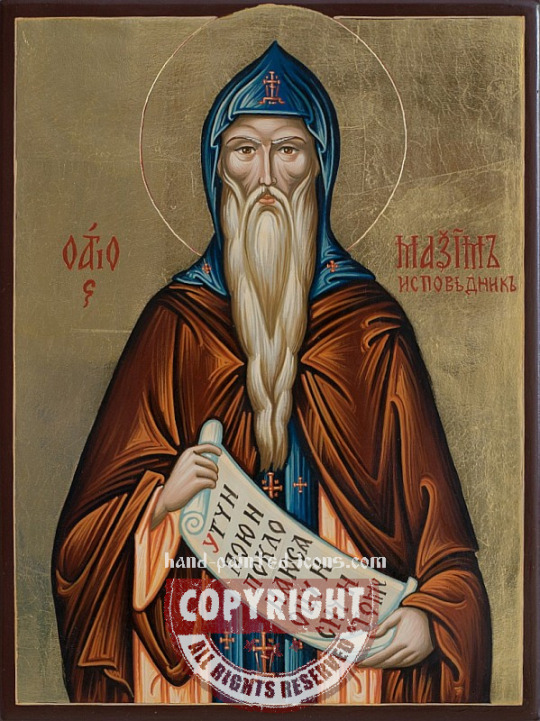
Saint Maximus the Confessor was born in Constantinople around 580 and raised in a pious Christian family. He received an excellent education, studying philosophy, grammar, and rhetoric. He was well-read in the authors of antiquity and he also mastered philosophy and theology. When Saint Maximus entered into government service, he became first secretary (asekretis) and chief counselor to the emperor Heraclius (611-641), who was impressed by his knowledge and virtuous life.
Saint Maximus soon realized that the emperor and many others had been corrupted by the Monothelite heresy, which was spreading rapidly through the East. He resigned from his duties at court, and went to the Chrysopolis monastery (at Skutari on the opposite shore of the Bosphorus), where he received monastic tonsure. Because of his humility and wisdom, he soon won the love of the brethren and was chosen igumen of the monastery after a few years. Even in this position, he remained a simple monk.
In 638, the emperor Heraclius and Patriarch Sergius tried to minimize the importance of differences in belief, and they issued an edict, the “Ekthesis” (“Ekthesis tes pisteos” or “Exposition of Faith),” which decreed that everyone must accept the teaching of one will in the two natures of the Savior. In defending Orthodoxy against the “Ekthesis,” Saint Maximus spoke to people in various occupations and positions, and these conversations were successful. Not only the clergy and the bishops, but also the people and the secular officials felt some sort of invisible attraction to him, as we read in his Life.
When Saint Maximus saw what turmoil this heresy caused in Constantinople and in the East, he decided to leave his monastery and seek refuge in the West, where Monothelitism had been completely rejected. On the way, he visited the bishops of Africa, strengthening them in Orthodoxy, and encouraging them not to be deceived by the cunning arguments of the heretics.
The Fourth Ecumenical Council had condemned the Monophysite heresy, which falsely taught that in the Lord Jesus Christ there was only one nature (the divine). Influenced by this erroneous opinion, the Monothelite heretics said that in Christ there was only one divine will (“thelema”) and only one divine energy (“energia”). Adherents of Monothelitism sought to return by another path to the repudiated Monophysite heresy. Monothelitism found numerous adherents in Armenia, Syria, Egypt. The heresy, fanned also by nationalistic animosities, became a serious threat to Church unity in the East. The struggle of Orthodoxy with heresy was particularly difficult because in the year 630, three of the patriarchal thrones in the Orthodox East were occupied by Monothelites: Constantinople by Sergius, Antioch by Athanasius, and Alexandria by Cyrus.
Saint Maximus traveled from Alexandria to Crete, where he began his preaching activity. He clashed there with a bishop, who adhered to the heretical opinions of Severus and Nestorius. The saint spent six years in Alexandria and the surrounding area.
Patriarch Sergius died at the end of 638, and the emperor Heraclius also died in 641. The imperial throne was eventually occupied by his grandson Constans II (642-668), an open adherent of the Monothelite heresy. The assaults of the heretics against Orthodoxy intensified. Saint Maximus went to Carthage and he preached there for about five years. When the Monothelite Pyrrhus, the successor of Patriarch Sergius, arrived there after fleeing from Constantinople because of court intrigues, he and Saint Maximus spent many hours in debate. As a result, Pyrrhus publicly acknowledged his error, and was permitted to retain the title of “Patriarch.” He even wrote a book confessing the Orthodox Faith. Saint Maximus and Pyrrhus traveled to Rome to visit Pope Theodore, who received Pyrrhus as the Patriarch of Constantinople.
In the year 647 Saint Maximus returned to Africa. There, at a council of bishops Monotheletism was condemned as a heresy. In 648, a new edict was issued, commissioned by Constans and compiled by Patriarch Paul of Constantinople: the “Typos” (“Typos tes pisteos” or “Pattern of the Faith”), which forbade any further disputes about one will or two wills in the Lord Jesus Christ. Saint Maximus then asked Saint Martin the Confessor (April 14), the successor of Pope Theodore, to examine the question of Monothelitism at a Church Council. The Lateran Council was convened in October of 649. One hundred and fifty Western bishops and thirty-seven representatives from the Orthodox East were present, among them Saint Maximus the Confessor. The Council condemned Monothelitism, and the Typos. The false teachings of Patriarchs Sergius, Paul and Pyrrhus of Constantinople, were also anathematized.
When Constans II received the decisions of the Council, he gave orders to arrest both Pope Martin and Saint Maximus. The emperor’s order was fulfilled only in the year 654. Saint Maximus was accused of treason and locked up in prison. In 656 he was sent to Thrace, and was later brought back to a Constantinople prison.
The saint and two of his disciples were subjected to the cruelest torments. Each one’s tongue was cut out, and his right hand was cut off. Then they were exiled to Skemarum in Scythia, enduring many sufferings and difficulties on the journey.
After three years, the Lord revaled to Saint Maximus the time of his death (August 13, 662). Three candles appeared over the grave of Saint Maximus and burned miraculously. This was a sign that Saint Maximus was a beacon of Orthodoxy during his lifetime, and continues to shine forth as an example of virtue for all. Many healings occurred at his tomb.
In the Greek Prologue, August 13 commemorates the Transfer of the Relics of Saint Maximus to Constantinople, but it could also be the date of the saint’s death. It may be that his memory is celebrated on January 21 because August 13 is the Leavetaking of the Feast of the Transfiguration of the Lord.
Saint Maximus has left to the Church a great theological legacy. His exegetical works contain explanations of difficult passages of Holy Scripture, and include a Commentary on the Lord’s Prayer and on Psalm 59, various “scholia” or “marginalia” (commentaries written in the margin of manuscripts), on treatises of the Hieromartyr Dionysius the Areopagite (October 3) and Saint Gregory the Theologian (January 25). Among the exegetical works of Saint Maximus are his explanation of divine services, entitled “Mystagogia” (“Introduction Concerning the Mystery”).
The dogmatic works of Saint Maximus include the Exposition of his dispute with Pyrrhus, and several tracts and letters to various people. In them are contained explanations of the Orthodox teaching on the Divine Essence and the Persons of the Holy Trinity, on the Incarnation of the Word of God, and on “theosis” (“deification”) of human nature.
“Nothing in theosis is the product of human nature,” Saint Maximus writes in a letter to his friend Thalassius, “for nature cannot comprehend God. It is only the mercy of God that has the capacity to endow theosis unto the existing... In theosis man (the image of God) becomes likened to God, he rejoices in all the plenitude that does not belong to him by nature, because the grace of the Spirit triumphs within him, and because God acts in him” (Letter 22).
Saint Maximus also wrote anthropological works (i.e. concerning man). He deliberates on the nature of the soul and its conscious existence after death. Among his moral compositions, especially important is his “Chapters on Love.” Saint Maximus the Confessor also wrote three hymns in the finest traditions of church hymnography, following the example of Saint Gregory the Theologian.
The theology of Saint Maximus the Confessor, based on the spiritual experience of the knowledge of the great Desert Fathers, and utilizing the skilled art of dialectics worked out by pre-Christian philosophy, was continued and developed in the works of Saint Simeon the New Theologian (March 12), and Saint Gregory Palamas (November 14).
SAINT TIKHON OF ZADONSK, BISHOP OF VORONEZH (1783)
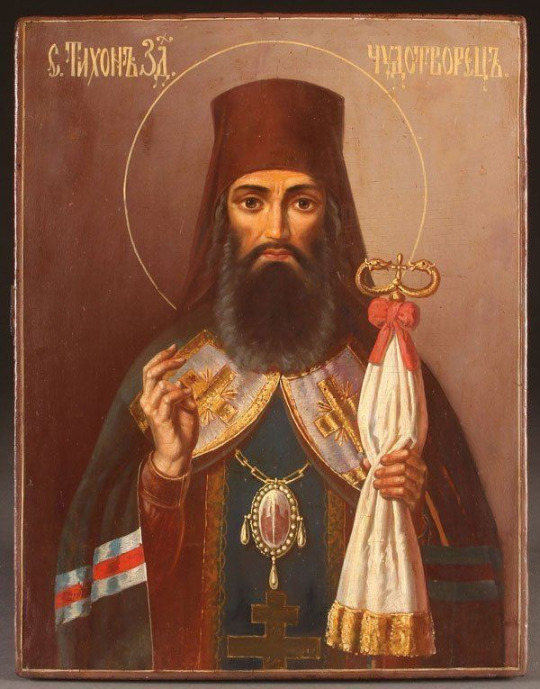
Saint Tikhon of Zadonsk, Bishop of Voronezh (in the world Timothy), was born in the year 1724 in the village of Korotsk in the Novgorod diocese, into the family of the cantor Sabellius Kirillov. (Afterward, a new family name, Sokolov, was given him by the head of the Novgorod Seminary). His father died when Timothy was a young child, leaving the family in such poverty that his mother was barely able to make ends meet. She wanted to give him to be raised by a neighbor, a coachman, since there was no other way to feed the family, but his brother Peter would not permit this. Timothy often worked a whole day with the peasants for a single piece of black bread.
As a thirteen-year-old boy, he was sent to a clergy school near the Archbishop of Novgorod's residence, and earned his keep by working with the vegetable gardeners. In 1740, he was accepted under a state grant set up for the Novgorod Seminary. The youth excelled at his studies. Upon finishing seminary in 1754, he became a teacher there, first in Greek, and later in Rhetoric and Philosophy. In the year 1758, he was tonsured with the name Tikhon. That same year he was appointed as prefect of the Seminary.
In 1759, he was transferred to Tver, and was elevated to the rank of Archimandrite of Zheltikov Monastery. Later, he was appointed Rector of the Tver Seminary and, at the same time, Superior of Otroch Monastery.
His election as bishop was providential. Metropolitan Demetrios, the presiding member of the Holy Synod, had intended to transfer the young Archimandrite to the Trinity-Sergiev Lavra. On the day of Pascha, at Peterburg, Archimandrite Tikhon was one of eight candidates being considered for selection as vicar bishop for Novogorod. Metropolitan Demetrios thought he was too young for that position, but agreed to submit his name. The lot fell on Archimandrite Tikhon three times.
On the same day, during the Cherubic Hymn, Bishop Athanasios of Tver, without realizing it, commemorated him as a bishop while cutting particles from the prosphora at the Table of Oblation. On May 13, 1761 he was consecrated as Bishop of Keksgolma and Ladoga (i.e., vicar bishop of the Novgorod diocese).
In 1763, Saint Tikhon was transferred to the See of Voronezh. For the four and a half years that he administered the diocese of Voronezh, Vladyka provided constant edification, both by his life and by his numerous pastoral counsels and soul-profiting books. He also wrote a whole series of works for pastors:
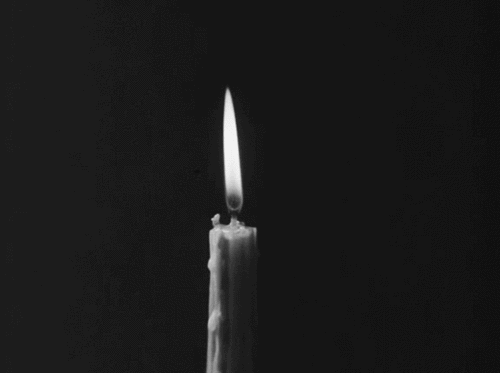

1 CORINTHIANS 1:26-29
26 For you see your calling, brethren, that not many wise according to the flesh, not many mighty, not many noble, are called. 27 But God has chosen the foolish things of the world to put to shame the wise, and God has chosen the weak things of the world to put to shame the things which are mighty; 28 and the base things of the world and the things which are despised God has chosen, and the things which are not, to bring to nothing the things that are, 29 that no flesh should glory in His presence.
MATTHEW 20:29-34
29 Now as they went out of Jericho, a great multitude followed Him. 30 And behold, two blind men sitting by the road, when they heard that Jesus was passing by, cried out, saying, "Have mercy on us, O Lord, Son of David!" 31 Then the multitude warned them that they should be quiet; but they cried out all the more, saying, "Have mercy on us, O Lord, Son of David!" 32 So Jesus stood still and called them, and said, "What do you want Me to do for you?" 33 They said to Him, "Lord, that our eyes may be opened." 34 So Jesus had compassion and touched their eyes. And immediately their eyes received sight, and they followed Him.
#orthodoxy#orthodoxchristianity#easternorthodoxchurch#originofchristianity#spirituality#holyscriptures#gospel#wisdom#saints
3 notes
·
View notes
Text
nai alla poianou oi fwtografies tha nai se ekthesi ston kerameiko?!
6 notes
·
View notes
Text
Ο Βασίλης Κοκοτσάκης εξηγει τα κομβικά σημεία της Τελικής Επικαιροποιημένης Έκθεσης για τα Τέμπη
Ο Βασίλης Κοκοτσάκης, Ειδικός πραγματογνώμονας σε θέματα πυρκαγιών Τεχνικός Σύμβουλος οικογενειών θυμάτων Δυστυχήματος Τεμπών της 28/2/2023,
Ο Βασίλης Κοκοτσάκης εξηγει τα κομβικά σημεία της Τελικής Επικαιροποιημένης Έκθεσης για τα Τέμπη – olympia
source https://www.olympia.gr/1590473/apopsi/o-vasilis-kokotsakis-exigei-ta-komvika-simeia-tis-telikis-epikairopoiimenis-ekthesis-gia-ta-tempi/
View On WordPress
0 notes
Text
Ο Βασίλης Κοκοτσάκης εξηγει τα κομβικά σημεία της Τελικής Επικαιροποιημένης Έκθεσης για τα Τέμπη
Ο Βασίλης Κοκοτσάκης, Ειδικός πραγματογνώμονας σε θέματα πυρκαγιών Τεχνικός Σύμβουλος οικογενειών θυμάτων Δυστυχήματος Τεμπών της 28/2/2023,
Ο Βασίλης Κοκοτσάκης εξηγει τα κομβικά σημεία της Τελικής Επικαιροποιημένης Έκθεσης για τα Τέμπη – olympia
source https://www.olympia.gr/1590473/apopsi/o-vasilis-kokotsakis-exigei-ta-komvika-simeia-tis-telikis-epikairopoiimenis-ekthesis-gia-ta-tempi/
View On WordPress
0 notes
Text
Ο Βασίλης Κοκοτσάκης εξηγει τα κομβικά σημεία της Τελικής Επικαιροποιημένης Έκθεσης για τα Τέμπη
Ο Βασίλης Κοκοτσάκης, Ειδικός πραγματογνώμονας σε θέματα πυρκαγιών Τεχνικός Σύμβουλος οικογενειών θυμάτων Δυστυχήματος Τεμπών της 28/2/2023,
Ο Βασίλης Κοκοτσάκης εξηγει τα κομβικά σημεία της Τελικής Επικαιροποιημένης Έκθεσης για τα Τέμπη – olympia
source https://www.olympia.gr/1590473/apopsi/o-vasilis-kokotsakis-exigei-ta-komvika-simeia-tis-telikis-epikairopoiimenis-ekthesis-gia-ta-tempi/
View On WordPress
0 notes
Text
Ο Βασίλης Κοκοτσάκης εξηγει τα κομβικά σημεία της Τελικής Επικαιροποιημένης Έκθεσης για τα Τέμπη
Ο Βασίλης Κοκοτσάκης, Ειδικός πραγματογνώμονας σε θέματα πυρκαγιών Τεχνικός Σύμβουλος οικογενειών θυμάτων Δυστυχήματος Τεμπών της 28/2/2023,
Ο Βασίλης Κοκοτσάκης εξηγει τα κομβικά σημεία της Τελικής Επικαιροποιημένης Έκθεσης για τα Τέμπη – olympia
source https://www.olympia.gr/1590473/apopsi/o-vasilis-kokotsakis-exigei-ta-komvika-simeia-tis-telikis-epikairopoiimenis-ekthesis-gia-ta-tempi/
View On WordPress
0 notes
Text
Η Όλ. Κεφαλογιάννη στα εγκαίνια της έκθεσης Pablo Picasso στους Δελφούς
https://travel-tourism.news-24.gr/i-ol-kefalogianni-sta-egkainia-tis-ekthesis-pablo-picasso-stous-delfous/
0 notes
Text

Έκθεση ελβετικού οίκου «βλέπει» την αμερικανική οικονομία να βρίσκεται στο «χείλος» του «γκρεμού»
O ελβετικός οίκος Gold Switzerland δημοσιοποίησε μία νέα έκθεση για την αμερικανική οικονομία με βάση την οποία θεωρεί πως είναι καταδικασμένη και το δολάριο «θα λιώσει σαν παγάκι» ανεξαρτήτως εάν η Fed μειώσει η αυξήσει τα επιτόκια!
Μάλιστα, χαρακτηρίζει τις ΗΠΑ ως «καημένη Αμερική»!
Τονίζει ...
Περισσότερα εδώ: https://romios.gr/ekthesi-elvetikoy-oikoy-vlepei-tin-amerikaniki-oikonomia-na-vrisketai-sto-cheilos-toy-gkremoy/
#Επίκαιρα#αμερικανική#βλέπει#βρίσκεται#γκρεμού#Έκθεση#ελβετικού#να#οικονομία#οίκου#Στο#την#του#χείλος
0 notes
Text

Το Επιμελητήριο Λέσβου συμμετείχε στην Διεθνή Τουριστική Έκθεση του Βερολίνου ΙΤΒ. https://news-24.gr/to-epimelitirio-lesvou-symmeteiche-stin-diethni-touristiki-ekthesi-tou-verolinou-itv/
0 notes
Text

Οριστικό τέλος για την έκθεση Ε3 μετά από 28 χρόνια https://webtech.rodos-island.gr/oristiko-telos-gia-tin-ekthesi-e3-meta-apo-28-chronia/
0 notes
Text
Saints&Reading: Friday, January 4, 2023
january 4_january 21
VENERABLE MAXIMUS THE CONFESSOR (662)
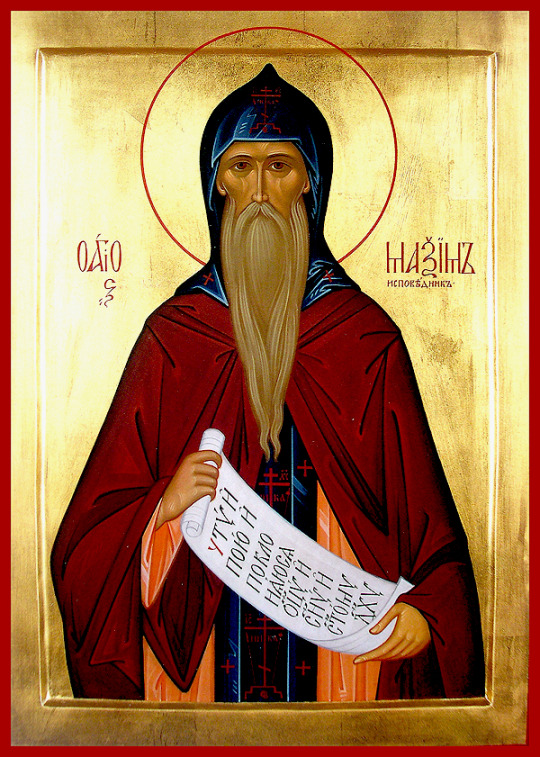
Saint Maximus the Confessor was born in Constantinople around 580 and raised in a pious Christian family. He received an excellent education, studying philosophy, grammar, and rhetoric. He was well-read in the authors of antiquity and he also mastered philosophy and theology. When Saint Maximus entered into government service, he became first secretary (asekretis) and chief counselor to the emperor Heraclius (611-641), who was impressed by his knowledge and virtuous life.
Saint Maximus soon realized that the emperor and many others had been corrupted by the Monothelite heresy, which was spreading rapidly through the East. He resigned from his duties at court, and went to the Chrysopolis monastery (at Skutari on the opposite shore of the Bosphorus), where he received monastic tonsure. Because of his humility and wisdom, he soon won the love of the brethren and was chosen igumen of the monastery after a few years. Even in this position, he remained a simple monk.
In 638, the emperor Heraclius and Patriarch Sergius tried to minimize the importance of differences in belief, and they issued an edict, the “Ekthesis” (“Ekthesis tes pisteos” or “Exposition of Faith),” which decreed that everyone must accept the teaching of one will in the two natures of the Savior. In defending Orthodoxy against the “Ekthesis,” Saint Maximus spoke to people in various occupations and positions, and these conversations were successful. Not only the clergy and the bishops, but also the people and the secular officials felt some sort of invisible attraction to him, as we read in his Life.
When Saint Maximus saw what turmoil this heresy caused in Constantinople and in the East, he decided to leave his monastery and seek refuge in the West, where Monothelitism had been completely rejected. On the way, he visited the bishops of Africa, strengthening them in Orthodoxy, and encouraging them not to be deceived by the cunning arguments of the heretics.
The Fourth Ecumenical Council had condemned the Monophysite heresy, which falsely taught that in the Lord Jesus Christ there was only one nature (the divine). Influenced by this erroneous opinion, the Monothelite heretics said that in Christ there was only one divine will (“thelema”) and only one divine energy (“energia”). Adherents of Monothelitism sought to return by another path to the repudiated Monophysite heresy. Monothelitism found numerous adherents in Armenia, Syria, Egypt. The heresy, fanned also by nationalistic animosities, became a serious threat to Church unity in the East. The struggle of Orthodoxy with heresy was particularly difficult because in the year 630, three of the patriarchal thrones in the Orthodox East were occupied by Monothelites: Constantinople by Sergius, Antioch by Athanasius, and Alexandria by Cyrus.
Saint Maximus traveled from Alexandria to Crete, where he began his preaching activity. He clashed there with a bishop, who adhered to the heretical opinions of Severus and Nestorius. The saint spent six years in Alexandria and the surrounding area.
Patriarch Sergius died at the end of 638, and the emperor Heraclius also died in 641. The imperial throne was eventually occupied by his grandson Constans II (642-668), an open adherent of the Monothelite heresy. The assaults of the heretics against Orthodoxy intensified. Saint Maximus went to Carthage and he preached there for about five years. When the Monothelite Pyrrhus, the successor of Patriarch Sergius, arrived there after fleeing from Constantinople because of court intrigues, he and Saint Maximus spent many hours in debate. As a result, Pyrrhus publicly acknowledged his error, and was permitted to retain the title of “Patriarch.” He even wrote a book confessing the Orthodox Faith. Saint Maximus and Pyrrhus traveled to Rome to visit Pope Theodore, who received Pyrrhus as the Patriarch of Constantinople.
In the year 647 Saint Maximus returned to Africa. There, at a council of bishops Monotheletism was condemned as a heresy. In 648, a new edict was issued, commissioned by Constans and compiled by Patriarch Paul of Constantinople: the “Typos” (“Typos tes pisteos” or “Pattern of the Faith”), which forbade any further disputes about one will or two wills in the Lord Jesus Christ. Saint Maximus then asked Saint Martin the Confessor (April 14), the successor of Pope Theodore, to examine the question of Monothelitism at a Church Council. The Lateran Council was convened in October of 649. One hundred and fifty Western bishops and thirty-seven representatives from the Orthodox East were present, among them Saint Maximus the Confessor. The Council condemned Monothelitism, and the Typos. The false teachings of Patriarchs Sergius, Paul and Pyrrhus of Constantinople, were also anathematized.
When Constans II received the decisions of the Council, he gave orders to arrest both Pope Martin and Saint Maximus. The emperor’s order was fulfilled only in the year 654. Saint Maximus was accused of treason and locked up in prison. In 656 he was sent to Thrace, and was later brought back to a Constantinople prison.
The saint and two of his disciples were subjected to the cruelest torments. Each one’s tongue was cut out, and his right hand was cut off. Then they were exiled to Skemarum in Scythia, enduring many sufferings and difficulties on the journey.
After three years, the Lord revaled to Saint Maximus the time of his death (August 13, 662). Three candles appeared over the grave of Saint Maximus and burned miraculously. This was a sign that Saint Maximus was a beacon of Orthodoxy during his lifetime, and continues to shine forth as an example of virtue for all. Many healings occurred at his tomb.
In the Greek Prologue, August 13 commemorates the Transfer of the Relics of Saint Maximus to Constantinople, but it could also be the date of the saint’s death. It may be that his memory is celebrated on January 21 because August 13 is the Leavetaking of the Feast of the Transfiguration of the Lord.
Saint Maximus has left to the Church a great theological legacy. His exegetical works contain explanations of difficult passages of Holy Scripture, and include a Commentary on the Lord’s Prayer and on Psalm 59, various “scholia” or “marginalia” (commentaries written in the margin of manuscripts), on treatises of the Hieromartyr Dionysius the Areopagite (October 3) and Saint Gregory the Theologian (January 25). Among the exegetical works of Saint Maximus are his explanation of divine services, entitled “Mystagogia” (“Introduction Concerning the Mystery”).
The dogmatic works of Saint Maximus include the Exposition of his dispute with Pyrrhus, and several tracts and letters to various people. In them are contained explanations of the Orthodox teaching on the Divine Essence and the Persons of the Holy Trinity, on the Incarnation of the Word of God, and on “theosis” (“deification”) of human nature.
“Nothing in theosis is the product of human nature,” Saint Maximus writes in a letter to his friend Thalassius, “for nature cannot comprehend God. It is only the mercy of God that has the capacity to endow theosis unto the existing... In theosis man (the image of God) becomes likened to God, he rejoices in all the plenitude that does not belong to him by nature, because the grace of the Spirit triumphs within him, and because God acts in him” (Letter 22).
Saint Maximus also wrote anthropological works (i.e. concerning man). He deliberates on the nature of the soul and its conscious existence after death. Among his moral compositions, especially important is his “Chapters on Love.” Saint Maximus the Confessor also wrote three hymns in the finest traditions of church hymnography, following the example of Saint Gregory the Theologian.
The theology of Saint Maximus the Confessor, based on the spiritual experience of the knowledge of the great Desert Fathers, and utilizing the skilled art of dialectics worked out by pre-Christian philosophy, was continued and developed in the works of Saint Simeon the New Theologian (March 12), and Saint Gregory Palamas (November 14).
Source: Orthodox Church in America_OCA
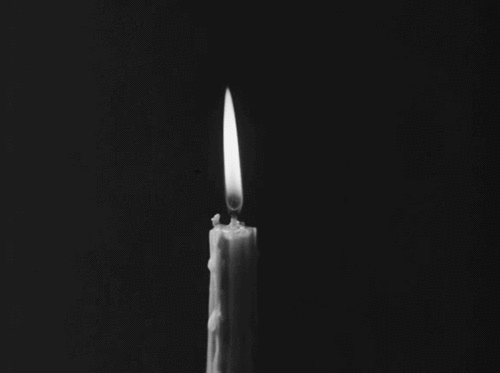
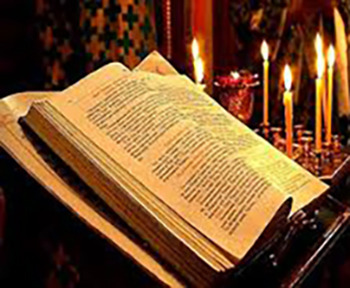
MARK 13:1-8
1 Then as He went out of the temple, one of His disciples said to Him, "Teacher, see what manner of stones and what buildings are here!" 2 And Jesus answered and said to him, "Do you see these great buildings? Not one stone shall be left upon another, that shall not be thrown down." 3 Now as He sat on the Mount of Olives opposite the temple, Peter, James, John, and Andrew asked Him privately, 4 Tell us, when will these things be? And what will be the sign when all these things will be fulfilled? 5 And Jesus, answering them, began to say: "Take heed that no one deceives you. 6 For many will come in My name, saying, 'I am He,' and will deceive many. 7 But when you hear of wars and rumors of wars, do not be troubled; for such things must happen, but the end is not yet. 8 For nation will rise against nation, and kingdom against kingdom. And there will be earthquakes in various places, and there will be famines and troubles. These are the beginnings of sorrows.
2 PETER 1:1-10
1Simon Peter, a bondservant and apostle of Jesus Christ,To those who have obtained like precious faith with us by the righteousness of our God and Savior Jesus Christ: 2 Grace and peace be multiplied to you in the knowledge of God and of Jesus our Lord, 3 as His divine power has given to us all things that pertain to life and godliness, through the knowledge of Him who called us by glory and virtue, 4 by which have been given to us exceedingly great and precious promises, that through these you may be partakers of the divine nature, having escaped the corruption that is in the world through lust. 5 But also for this very reason, giving all diligence, add to your faith virtue, to virtue knowledge, 6 to knowledge self-control, to self-control perseverance, to perseverance godliness, 7 to godliness brotherly kindness, and to brotherly kindness love. 8 For if these things are yours and abound, you will be neither barren nor unfruitful in the knowledge of our Lord Jesus Christ. 9 For he who lacks these things is shortsighted, even to blindness, and has forgotten that he was cleansed from his old sins.10 Therefore, brethren, be even more diligent to make your call and election sure, for if you do these things you will never stumble;
#orthodoxy#orthodoxchristianity#eastern orthodox church#originofchristianity#spirituality#holyscriptures#gospel#bible
4 notes
·
View notes
Text
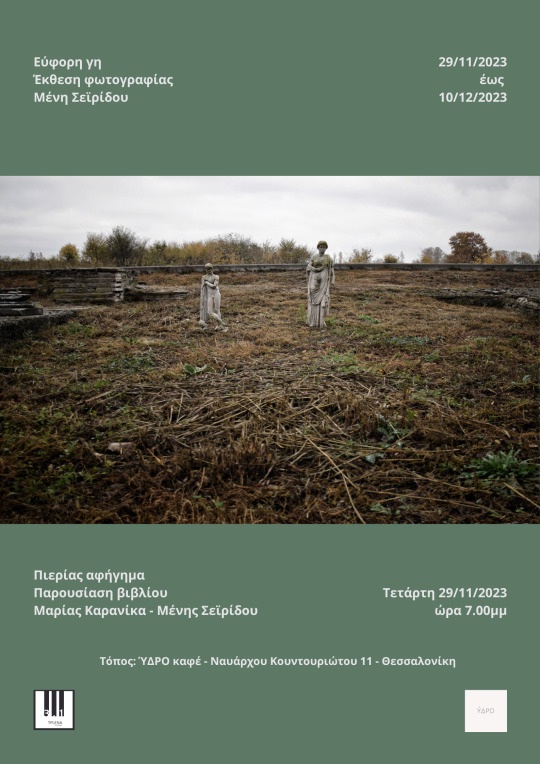
Έκθεση φωτογραφίας "Εύφορη γη" της Μένης Σεϊρίδου
https://www.photo-news.gr/blog/index.php?ekthesi-fotografias-menis-seiridou
0 notes
Text

Η προγεννητική έκθεση των εμβρύων στην ατμοσφαιρική ρύπανση επηρεάζει τα μωρά μετά τη γέννησή τους https://health.rodos-island.gr/progennitiki-ekthesi-ton-emvryon-stin-atmosfairiki-rypansi-epireazei-mora-meta/
0 notes
Text
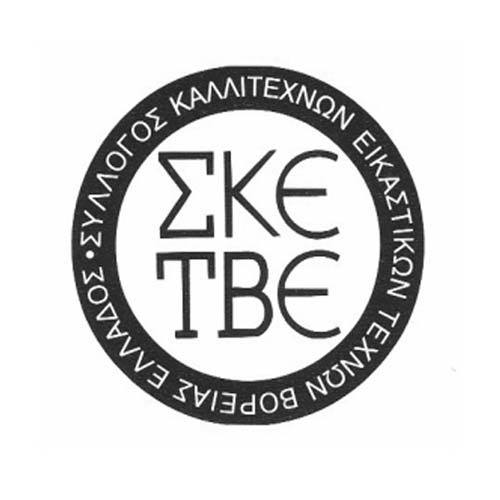
Ο Σύλλογος Καλλιτεχνών Εικαστικών Τεχνών Βορείου Ελλάδος (ΣΚΕΤΒΕ) είναι πολιτιστικό μη κερδοσκοπικό σωματείο, που ιδρύθηκε το 1983 από ομάδα γνωστών εικαστικών, με σκοπό την ανάπτυξη και διάδοση των εικαστικών τεχνών στη Βόρεια Ελλάδα, την προβολή των καλλιτεχνών που δραστηριοποιούνται στο συγκεκριμένο χώρο, την ενεργό συμμετοχή τους στην πολιτιστική και κοινωνική ζωή, την καλλιτεχνική αποκέντρωση και τη συνεργασία με αντίστοιχους φορείς στην Ελλάδα και στο εξωτερικό.
Μέλη του Συλλόγου είναι πολλοί επιφανείς καλλιτέχνες της Θεσσαλονίκης και της Βόρειας Ελλάδας, καθώς και ακαδημαϊκοί, οι περισσότεροι μάλιστα με ιδιαίτερη διεθνή δραστηριότητα και προβολή.
0 notes